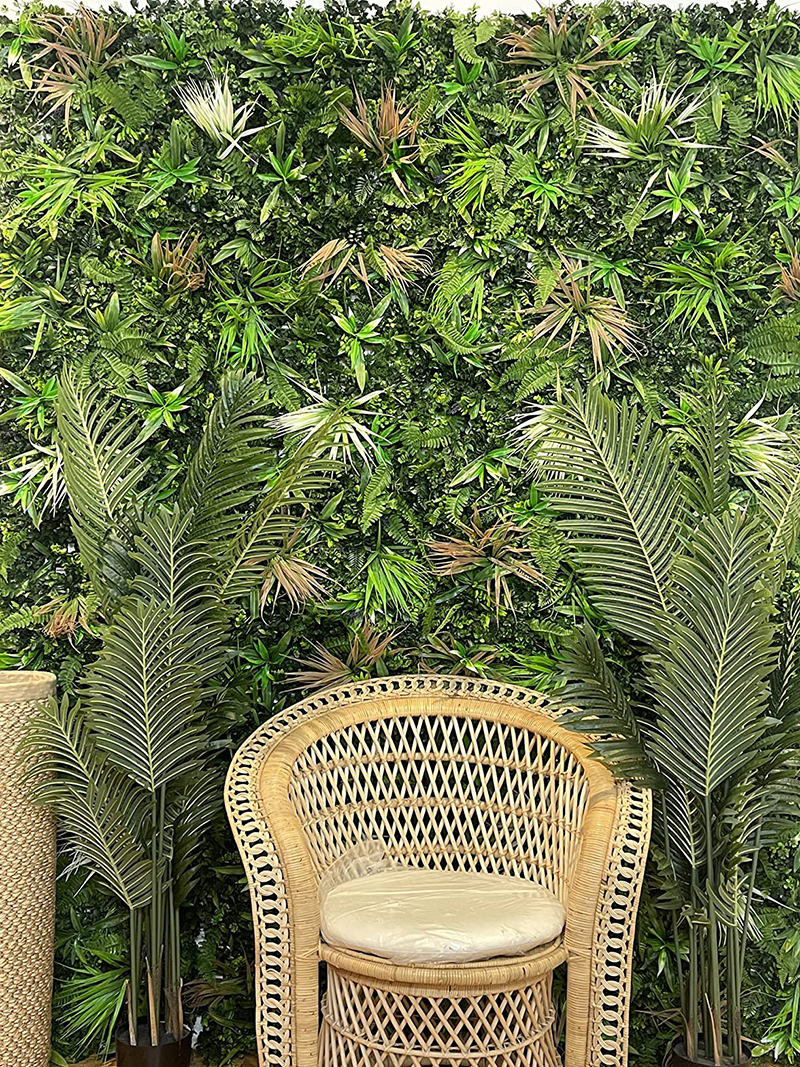Economic Benefits Analysis of 3D Artificial Vertical Gardens
The adoption of 3D artificial vertical gardens is rising globally, driven by their ability to merge aesthetic appeal with functional sustainability. Beyond environmental advantages, these structures offer measurable economic benefits for property owners, businesses, and municipalities. By analyzing cost savings, revenue generation, and long-term value creation, stakeholders can better understand the financial rationale for investing in this technology.

Reduced Operational Costs Through Energy Efficiency
One of the most significant economic benefits of 3D artificial vertical gardens lies in their capacity to lower energy consumption in buildings. The foliage acts as a natural insulator, reducing heat transfer through walls during summer and retaining warmth in winter. Studies indicate that green facades can lower indoor temperatures by up to 5°C in hot climates, decreasing reliance on air conditioning systems. This energy efficiency translates directly into reduced utility bills for property owners, particularly in commercial buildings with large surface areas.
Additionally, vertical gardens mitigate the urban heat island effect, a phenomenon where cities experience higher temperatures than rural areas due to concrete and asphalt surfaces. By cooling surrounding air, these installations reduce the strain on municipal cooling infrastructure, potentially lowering public energy costs. For example, a city with widespread vertical garden adoption might delay investments in expanding power grid capacity, saving taxpayer dollars.
Water conservation is another area of cost savings. Advanced 3D designs incorporate drip irrigation systems and moisture-retentive substrates, minimizing water waste compared to traditional landscaping. In arid regions, this efficiency can cut irrigation expenses by up to 70%, making vertical gardens financially viable for drought-prone areas.
Enhanced Property Values and Marketability
The aesthetic appeal of 3D artificial vertical gardens significantly boosts property values, both residential and commercial. Green walls create visually striking facades that stand out in competitive real estate markets, attracting tenants and buyers willing to pay premium rates. A study by the University of Exeter found that properties with green infrastructure command rents 7% higher than non-green counterparts, with similar increases in sale prices.
For businesses, vertical gardens enhance brand image by signaling environmental responsibility. Companies occupying green-certified buildings often report higher employee retention and productivity, reducing recruitment and training costs. Retail spaces with vertical gardens also benefit from increased foot traffic, as consumers associate greenery with wellness and luxury.
In tourism-dependent regions, vertical gardens can revitalize urban areas, drawing visitors to previously overlooked neighborhoods. Public installations on transit stations, bridges, or parking garages transform mundane structures into landmarks, stimulating local economies through spending on dining, shopping, and lodging.
Long-Term Durability and Maintenance Savings
Unlike traditional living walls, which require frequent pruning, fertilization, and pest control, 3D artificial vertical gardens are engineered for low maintenance. Synthetic substrates resist mold and decay, while UV-stabilized materials prevent fading from sunlight exposure. This durability extends the lifespan of installations to 15–20 years, compared to 5–10 years for organic alternatives, reducing replacement costs over time.
Automated monitoring systems further cut labor expenses. Sensors embedded in the structure track soil moisture, nutrient levels, and plant health, alerting managers to issues before they escalate. Some designs even use self-repairing materials to fix minor cracks or tears, eliminating the need for manual repairs.
For municipalities, the longevity of vertical gardens reduces public spending on infrastructure upkeep. Green walls on highways or sound barriers, for instance, require less frequent replacement than concrete or metal panels, which degrade under weather exposure.
Job Creation and Industry Growth
The expansion of the 3D artificial vertical garden sector stimulates employment across multiple industries. Manufacturing roles emerge in producing lightweight frames, recyclable substrates, and smart irrigation components. Installation teams specialize in integrating these systems into diverse architectural settings, from skyscrapers to subway tunnels.
Maintenance services also see growth, as properties require periodic inspections and software updates for smart systems. Landscape architects and urban planners with expertise in biophilic design are increasingly in demand, helping clients optimize green space for economic and ecological goals.
At a macro level, the industry fosters innovation in related fields like 3D printing, renewable energy, and waste recycling. For example, researchers are developing biodegradable polymers from agricultural waste to replace petroleum-based materials, creating new markets for agricultural byproducts.
Conclusion: A Strategic Investment for Sustainable Growth
The economic case for 3D artificial vertical gardens is rooted in their ability to deliver immediate cost savings while generating long-term value. From energy efficiency and property appreciation to job creation and industry innovation, these installations offer a multifaceted return on investment. As cities grapple with climate change and resource scarcity, vertical gardens emerge not only as an ecological solution but also as a financially prudent strategy for building resilient, prosperous communities.
Contact: Amy
Phone: 86-15311787313
E-mail: info@foszmac.com
Whatsapp:86-15311787313
Add: Fengtai District, Dacheng Road, No.24 Building, Room 203, Beijing, China